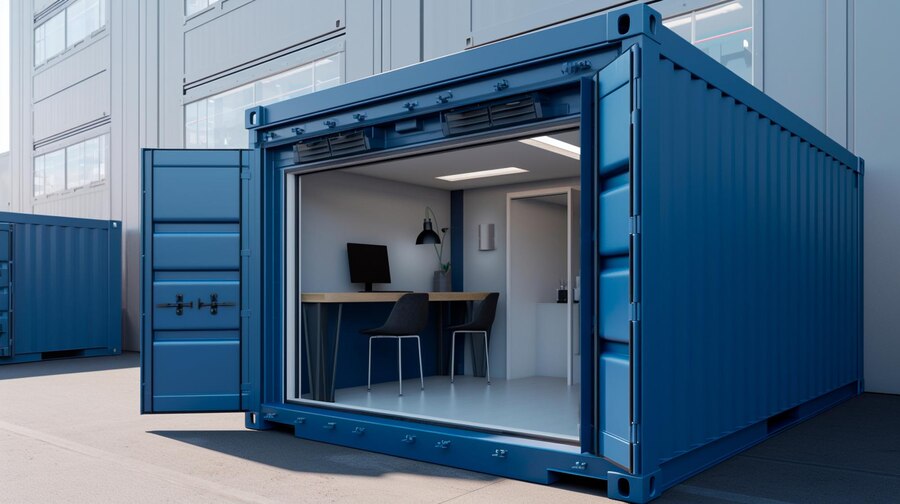Maximizing E-Commerce Success: The Essential Role Of Warehousing Infrastructure

In the dynamic and ever-evolving world of e-commerce, the significance of warehousing infrastructure is paramount. As the digital marketplace grows, the necessity for e-commerce businesses to invest in efficient warehousing solutions and e-commerce warehousing strategies becomes increasingly vital.
This extended discussion not only explores warehousing as an operational requirement but also as a strategic asset, delving into its impact on delivery speed, inventory management, return processing, scalability, data-driven decision-making, environmental responsibility, and building customer trust.
By understanding how these facets — from optimizing delivery speeds and effective inventory management to leveraging data for strategic insights and emphasizing sustainability — shape the backbone of e-commerce operations, businesses can gain a competitive edge in the highly dynamic online retail landscape.
1. Speed: The Heartbeat Of The E-Commerce Industry.
In the digital age, where instant gratification is the norm, e-commerce businesses face the challenge of meeting and exceeding customer expectations regarding delivery speed. The role of warehousing in this aspect cannot be overstated. By strategically investing in warehousing infrastructure, e-commerce companies can ensure that products are not only stored but also distributed quickly and efficiently.
Understanding and implementing speed optimization in warehousing is a key factor in meeting the rapid pace of the e-commerce industry.
- A. The Impact of Location on Delivery Efficiency
- The placement of warehouses plays a critical role in delivery times. Warehouses located near key transport hubs or customer bases can drastically reduce the time taken to deliver products.
- B. Technological Integration for Speed Optimization
- The integration of advanced technologies like robotics and automated sorting systems in warehouses can significantly enhance the speed of order processing and delivery.
2. Inventory Management: The Backbone Of E-Commerce Operations.
Effective inventory management, a core component of e-commerce operations, is crucial for maintaining the right balance of stock and ensuring operational efficiency. It is a complex balancing act that requires precision and foresight. Having what you need to run things smoothly is vital, including sufficient energy provision amongst others! Find the ideal warehousing energy solutions here.
- A. The Role of Real-Time Inventory Tracking
- Investing in real-time inventory tracking systems allows businesses to have up-to-the-minute data on their stock levels, helping in making informed decisions about restocking and product availability.
- B. Automated Replenishment Systems
- Automated replenishment systems can predict stock depletion and initiate restocking processes, ensuring that popular products are always in supply.
3. Simplifying Returns: Turning A Challenge Into An Opportunity.
Returns are an integral part of the e-commerce customer experience. A well-structured warehousing system can make this process seamless and efficient. By streamlining the returns process, e-commerce companies can enhance customer satisfaction, a critical aspect of e-commerce efficiency.
- A. Efficient Return Processing
- With dedicated areas for processing returns, businesses can quickly sort, inspect, and restock returned items, minimizing the turnaround time.
- B. Impact on Customer Satisfaction
- An efficient return process directly impacts customer satisfaction and loyalty, as customers value a hassle-free return experience.
4. Scalability: Preparing For Future Growth.
Investing in scalable warehousing solutions is crucial for e-commerce businesses to adapt swiftly in the ever-evolving market landscape.
- A. Flexible Warehousing Solutions
- Investing in modular and adaptable warehousing solutions allows businesses to expand or contract their storage capacity in response to market demands.
- B. Managing Seasonal Fluctuations
- Scalable warehousing infrastructure is particularly beneficial in managing seasonal peaks and troughs in demand.
5. Harnessing Data For Strategic Advantage.
Warehousing infrastructure is not just about physical storage; it’s also a rich source of data. Utilizing data analytics in warehousing can significantly aid in stock optimization and aligning inventory with market trends and customer demands.
- A. Insights into Customer Behavior and Preferences
- Data collected from warehousing operations can provide valuable insights into customer buying patterns and preferences.
- B. Stock Optimization Based on Data Analysis
- Using data analytics, businesses can optimize their stock levels, ensuring they are aligned with current market trends and customer demands.
6. Environmental Responsibility: Reducing The Carbon Footprint.
As sustainability becomes a key consideration for consumers, e-commerce businesses need to focus on reducing their environmental impact.
- A. Green Warehousing Practices
- Adopting green warehousing practices, including energy-efficient lighting and sustainable materials, plays a significant role in reducing the environmental impact of e-commerce operations.
- B. Optimizing Logistics for Environmental Efficiency
- Efficient warehousing can also lead to optimized logistics, reducing the number of delivery vehicles on the road and lowering emissions.
7. Building Customer Trust Through Reliable Fulfillment.
The reliability of order fulfillment is a cornerstone in building customer trust and loyalty. Achieving accurate and timely fulfillment, a cornerstone in building customer trust, is greatly enhanced through advanced warehousing infrastructure.
- A. The Impact of Accurate and Timely Fulfillment
- A warehousing system that ensures accurate and timely fulfillment of orders is instrumental in building a reputable brand image.
- B. Reducing Errors in Order Processing
- Investment in automated systems and quality checks in the warehouse can significantly reduce the occurrence of errors in order processing.
Conclusion.
In conclusion, investing in warehousing infrastructure is a multifaceted strategy that offers a plethora of benefits for e-commerce businesses. From enhancing delivery speeds and streamlining inventory management to leveraging data for strategic decision-making and emphasizing environmental responsibility, the advantages of a well-planned warehousing infrastructure are clear and varied.
As the e-commerce sector continues to expand and evolve, those businesses that strategically invest in their warehousing infrastructure are positioning themselves for long-term success and sustainability in the highly competitive digital marketplace. Sticking to what works for you might be comfortable and ideal in the perfect world, but adjusting to survive works for the real world we live in.
Need More Business Related Information!













